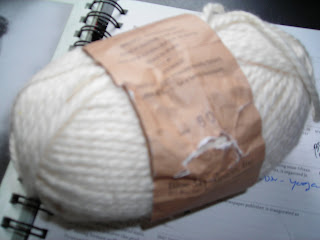Sutra I.14
 In Sutra I.14 of the Yoga Sutras, Patanjali lists the elements that go toward having a practice that moves one toward clarity and away from misapprehension or suffering. It's one of those laundry-list sutras that are fun to chant. You get into a rhythm, there are few changes in pitch, and there's a sense of a thought being framed, delineated, in the way that the Sanskrit words line up, one after another.
In Sutra I.14 of the Yoga Sutras, Patanjali lists the elements that go toward having a practice that moves one toward clarity and away from misapprehension or suffering. It's one of those laundry-list sutras that are fun to chant. You get into a rhythm, there are few changes in pitch, and there's a sense of a thought being framed, delineated, in the way that the Sanskrit words line up, one after another.How do you begin to see yourself, and thus, your relationship to everything else around you, more clearly? First, by practicing over a period of time: dirgakhala. And this applies to anything that you do that provides that momentary flash of Aha, that's who I am, that's how I see the world. For me, it might be yoga or knitting. For you, it could be any one of a million different things. The key is maintaining that practice for more than a moment, sticking with it for the long haul.
Take Parker, for example. He loves to chew yarn. In the two weeks that he's lived with us, he's been consistent in his devotion to finding any skein of yarn within reach and turning it into a chew toy.

Third, satkara. Sat means truth, and this one is the trickiest to explain, because it goes toward the New Age-y language that I try to avoid in my teaching. The way that I understand satkara is that through a practice, you peel away all those layers that come from your upbringing, and society's expectations, and what you think you need to be in order to be right, and then, there you are, at the center of the onion, as in Peer Gynt, and it's you, without all the stuff that was superimposed on who you really are. Some people call this living your truth, and that's fine if it works for them. I think of this one as having that experience of being really comfortable in your own skin.
Fourth, adara: with enthusiasm. You practice more consistently because you enjoy what you're doing. And the more that the practice is enjoyable, the more that you will discipline yourself to commit to it. (I think we all see where this one would go in the Parker analogy.)
Fifth, asevito: service to the practice. Not in the sense of being a slave, but as a student respects a teacher: service to a wisdom, a body of knowledge, out of respect and a desire to learn and grow. Here I'm showing you a picture of Parker's work on a ball of Tahki Cotton Classic. In the background, a picture of Rosie. This wasn't planned, but I like the idea that Rosie, though never a chewer of shoes or yarn, would have been a good mentor for Parker.


Comments
I'm getting off my duff now, and spreading out the yoga mat.
Any chance you could come to my hotel during Stitches and do a yoga session with me... help me remember that my truth doesn't mean that I need to own all the yarn I touch in the Market?
Parker is probably at the center of his onion. :D